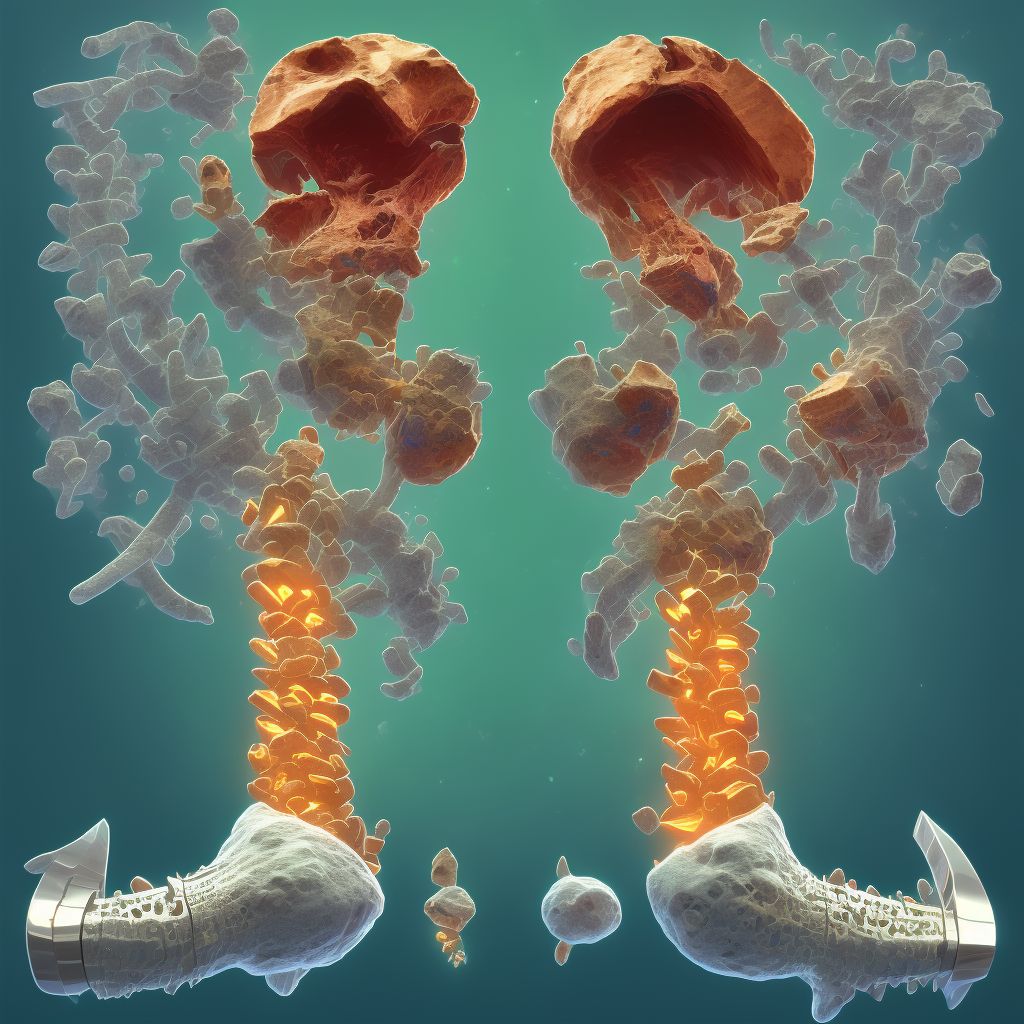
Nondisplaced oblique fracture of shaft of left tibia, subsequent encounter for closed fracture with malunion Save
ICD-10 code: S82.235P
Disease category: S82.235: Nondisplaced oblique fracture of shaft of left tibia
Nondisplaced Oblique Fracture of Shaft of Left Tibia: Understanding Subsequent Encounters for Closed Fracture with Malunion
When it comes to bone fractures, one type that can occur is a nondisplaced oblique fracture of the shaft of the left tibia. This specific fracture involves a break in the tibia bone, which is also known as the shinbone. It is called "nondisplaced" because the bone fragments remain in alignment, and "oblique" due to the diagonal nature of the break.
After the initial diagnosis and treatment of this fracture, subsequent encounters may be required to address a condition known as malunion. A malunion occurs when the fractured bone heals in an improper position or alignment. This can lead to various complications and discomfort for the patient.
During subsequent encounters for a closed fracture with malunion, healthcare professionals aim to evaluate the progress of the healing process and determine the best course of action for the patient. These encounters may involve different diagnostic tests, such as X-rays or CT scans, to assess the alignment and position of the healed bone.
Additionally, medical professionals may perform a thorough examination to monitor the patient's symptoms and mobility. By understanding the patient's condition and any limitations they may be experiencing, healthcare providers can develop an appropriate treatment plan tailored to the individual's needs.
- Monitoring the healing process: Regular follow-up appointments are crucial for tracking the progress of the malunion. This helps healthcare providers understand if the bone is healing properly or if any adjustments need to be made.
- Addressing pain and discomfort: Patients may experience pain or discomfort due to the malunion. Healthcare professionals can recommend pain management techniques or prescribe appropriate medications to alleviate these symptoms.
- Rehabilitation and physical therapy: Depending on the severity of the malunion and its impact on the patient's mobility, physical therapy may be necessary. This can help restore strength, flexibility, and range of motion in the affected leg.
In conclusion, a nondisplaced oblique fracture of the shaft of the left tibia can lead to subsequent encounters for a closed fracture with malunion. These encounters involve monitoring the healing process, addressing pain and discomfort, and providing rehabilitation if necessary. By closely monitoring the patient's condition, healthcare professionals can ensure a successful recovery and improve the patient's quality of life.
Treatment of Nondisplaced oblique fracture of shaft of left tibia, subsequent encounter for closed fracture with malunion:
Treatment Options for Nondisplaced Oblique Fracture of Shaft of Left Tibia
When it comes to a nondisplaced oblique fracture of the shaft of the left tibia, proper treatment is crucial for successful healing and minimizing long-term complications. This type of fracture occurs when the tibia bone breaks at an angle but remains aligned, resulting in a stable injury.
Here are s...
To see full information about treatment please Sign up or Log in